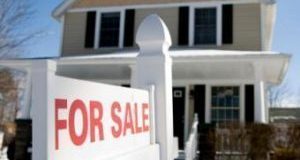A new report shows that most millennials believe now is a good time to buy a home—and more than half of them are actually ready to take the plunge. About 51 percent of those surveyed said they are either extremely likely or very likely to buy within the next year. According to experts, impending mortgage rate hikes are likely causing the uptick in urgency. Still, roadblocks like scarce inventory and a lack of knowledge around the homebuying process could pose a problem for millennials.
Read More »Defects Up Over the Year; North Dakota Sees Most
New data shows defects on loan applications are up across the country—both for the month and over the year. The culprit? Riskier lending practices on both purchase loans and refinances. North Dakota, Montana, and Vermont had the highest defect frequency at the state level, while McAllen, Texas, and Knoxville, Tennessee, took the cake in terms of metro markets.
Read More »More Boomers Refinancing, Taking Out Student Loans
New data shows that Baby Boomers may be just as saddled with student loan debt as millennials—maybe even more. Between 2005 and 2015, people aged 60 or older saw their student debt increase eight times, while debt for those under 30 increased just twice. Many Boomers are taking out loans and refinancing their homes to either return to school or help their children and grandchildren with college tuition.
Read More »Prices Peak in 8 States, 15 Metros
After the 59th straight month of appreciation, home prices have hit a new peak of $272K. They also reached a new peak in eight states, including Indiana, Massachusetts, New York, North Carolina, Pennsylvania, Tennessee, and Washington. Fifteen metro markets also peaked, with San Jose, California, seeing the biggest jump year-over-year.
Read More »San Jose Buyers See Fastest Closing Times
New data shows San Jose, California, homebuyers enjoy the fastest closing times in the nation, with an average of just 41 days to close. Six other cities came in at 50 days or less, including Dallas, San Francisco, and Denver. These markets are seeing multiple bidders, many of whom are pre-qualified and offer large down payments, on the first day of listing.
Read More »Tight Supply Sends Prices Up 12 Percent
New data shows that real home prices have risen almost 12 percent over the year. Though wages have risen, increasing mortgage rates and tight supply continue to hurt overall affordability. Jacksonville, Florida, came in as the least affordable metro in the nation.
Read More »Rural, Urban or Suburban: Who Wants to Buy More?
Despite talk of the rural-urban divide, new data shows that Americans seem to share the same sentiments about homeownership regardless of their location. In a recent survey, residents in rural, suburban, and urban areas all shared largely similar thoughts on homeownership and its role in the American Dream. The only place the three groups diverged was in the intended length of stay; only 35 percent of urban buyers plan to stay seven years or more.
Read More »Purchase Loans Outpace Refis
Purchase loans are up and refis are down according to a recent report. Refis are down significantly over the past six months, while purchase loans are on the rise. Time to close is also narrowing for the month on both purchase and refi loans, averaging just 41 to 42 days per loan.
Read More »Disparate Tech Holds Lenders Back
Today’s mortgage servicers are suffering from overly disparate technology solutions, and those disconnected systems are holding businesses back, according to a new report. In response to increased compliance follow the housing crisis, most available mortgage technology has become product-specific, and that’s created a disconnect that requires fractured, inefficient processes that are costly and unwieldy. The report proposes an overlay system to bridge the gaps and provide more consistency.
Read More »West Sees Biggest Jumps in Home Prices
New data shows that the West—specifically the Northwest—had the top-performing market for Q1 2017. Seattle and Portland had two of the strongest showings in terms of price growth, while the region as a whole saw prices rise 8 percent over the year. The worst market for the quarter was Memphis, Tennessee.
Read More » theMReport.com Your trusted source for mortgage banking news
theMReport.com Your trusted source for mortgage banking news









